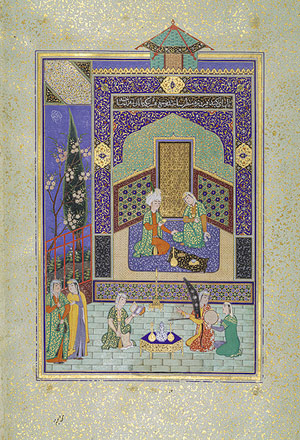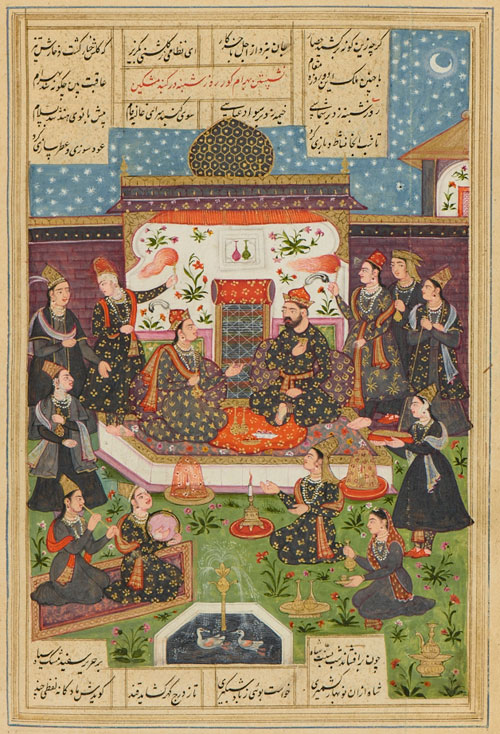If its Wednesday it must be Egypt.It is Wednesday and Bahram Gur, the king of Iran is paying his weekly visit to his Egyptian queen. Hump day. The not on to the next queen and into the weekend royal swing. Bahram Gur married seven princesses of seven countries, built for each a castle of a different color, and visited regularly on different days of the week, clothing himself in the matching color.

---The fourth of the late twelfth-century Persian poet Nizami's five epic poems, later combined to form the famous Khamsa (Quintet), was the Haft Paikar, or Seven Portraits, so named from one incident in the story. It recounts the legendary history of the Sasanian king Bahram Gur, who is idealized as a great lover and hunter. The story is known also as the Seven Princesses because Bahram Gur, so the story goes, married seven beautiful princesses from the seven regions of the world, and visited each in her own pavilion on successive nights of the week. In this highly sensual but moralistic work, each princess tells a story and there are additional stories within these. This painting shows Bahram Gur visiting the princess Azarene, daughter of the king of Maghrib (the Arabic name for northwest Africa), in the turquoise pavilion on a Wednesday. The princess spins a fantastic tale that alludes to the dangers of greed.---Read More:http://www.metmuseum.org/toah/works-of-art/13.228.7.10
Bahram Gur was given to vivid imagery: his red Russian queen of Tuesdays was a “honeyed apple, sweet and rosy-hued.” To his Roman aruss- doll- of Sundays and the yellow castle he said: “The shops close at night; but you, seller of beauty, you must open your shop at night.” Bahram Gur lived in the fourth century before Christ, sort of before monotheism gave pause for reflection, albeit briefly.

---"Bahram Gur in the Yellow Palace on Sunday", Folio from a Khamsa (Quintet) of Nizami Sultan Muhammad Nur (ca. 1472–ca. 1536) Calligrapher: Mahmud Muzahhib Painter: Sultan Muhammad (active first half 16th century) Painter: Shaikh Zada Author: Nizami (Ilyas Abu Muhammad Nizam al-Din of Ganja) (probably 1141–1217)---Read More:http://www.metmuseum.org/Collections/search-the-collections/140003822?rpp=20&pg=2&ft=Sultan+supc%2fsupAli+Mashhadi+%28Afghani%2c+active+late+15th-early+16th+century

---Poetry was an extremely important aspect of Persian culture, and a special section of the exhibition is devoted to six illustrated manuscripts (from the fifteenth through the seventeenth centuries) of Nizami's Khamsa ("The Quintet"), which include depictions of the ill-fated lovers Laila and Majnun, the Persian Romeo and Juliet, as well as Iskander (Alexander the Great), and Bahram Gur and the Seven Princesses. ---Bahram Gur and the Slavic Princess Nasrinnosh in the Red Pavilion Khamsa by Nizami Ahmedabad, ca. 1618, M.445, fol. 224v.---Read More:http://www.arttattler.com/archiveislamicmanuscripts.html
Below:Bahram Gur’s Trick Shot, Nizami Ganjavi (d. 1209), Khamsa (The Quintet), in Persian. India, probably Ahmedabad, ca. 1618, by the scribe Fath Muhammad. The Morgan Library & Museum; MS M. 445, (fol. 202v), Purchased by Pierpont Morgan, 1910, Photography by Joseph Zehavi, 2008. All that’s missing is a chest full of medals and a marching band…Read More:http://arttattler.com/archivemedievalhunt.html









 COMMENTS
COMMENTS



